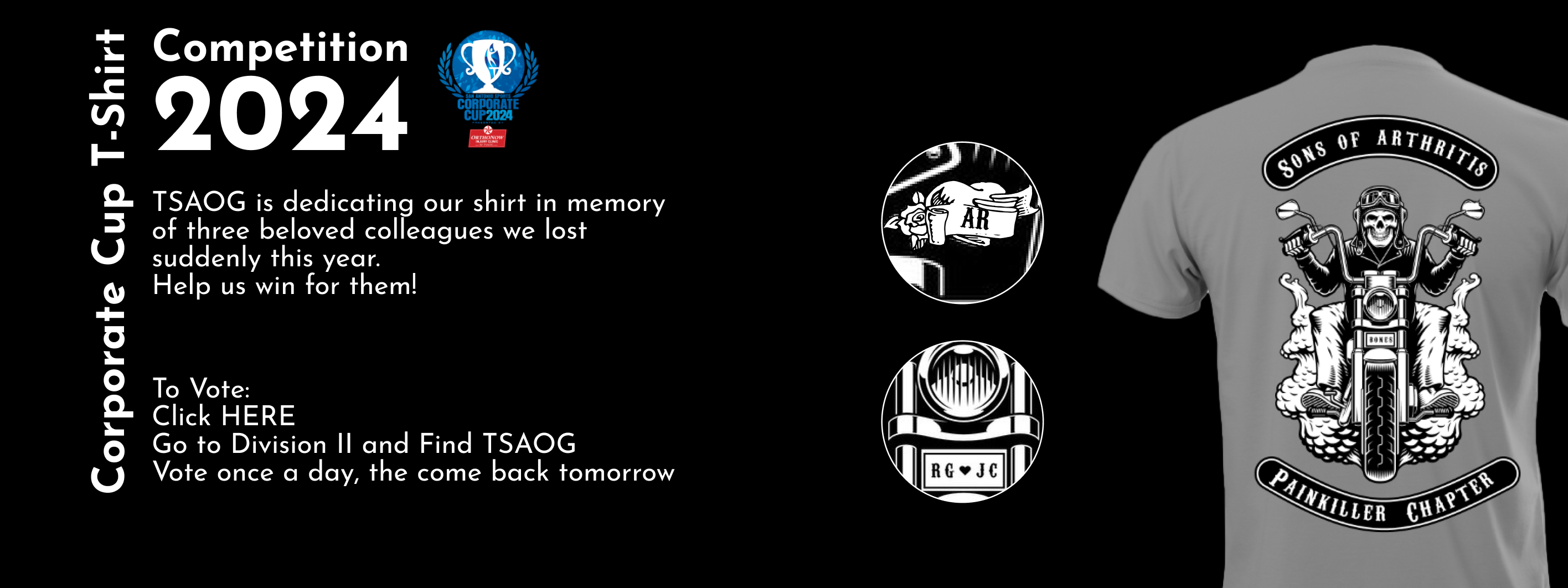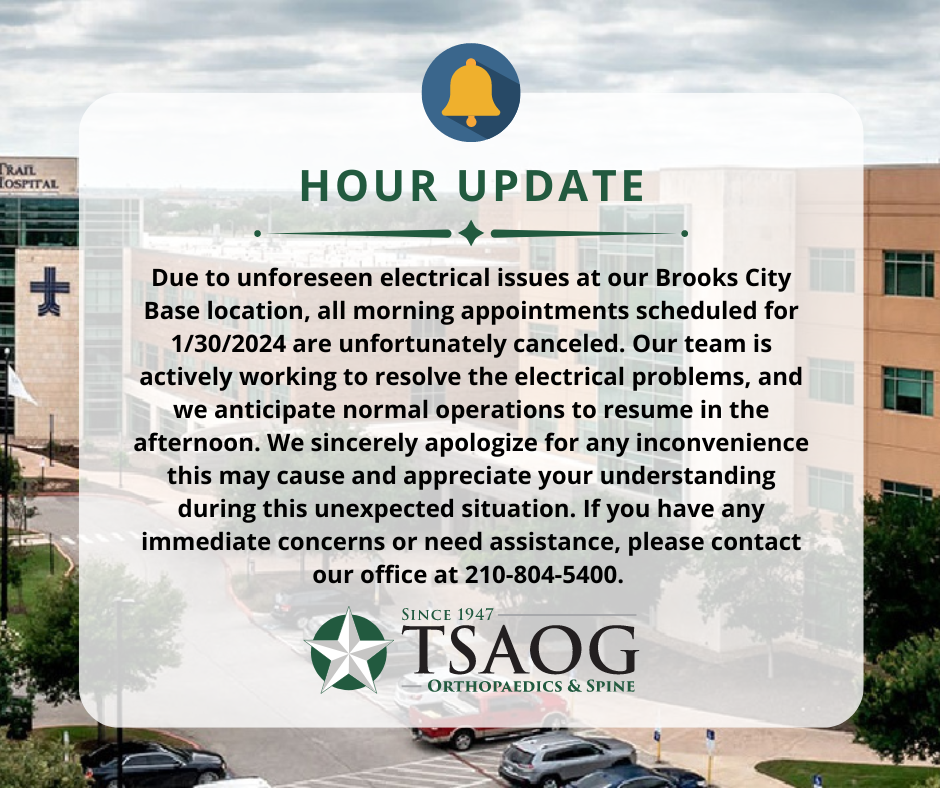Reviewed By Dr. Robbins: Justin Robbins, M.D. | Foot & Ankle Surgeon San Antonio
Severe ankle arthritis can significantly impact your quality of life, making even simple activities painful and challenging. When conservative treatments no longer provide relief, surgical intervention may be necessary. Two primary surgical options—ankle fusion and ankle replacement—offer different approaches to eliminating pain and improving function. At TSAOG Orthopaedics, our foot and ankle specialists work closely with patients to determine the treatment plan that best meets their individual needs and lifestyle goals.
What is an ankle replacement?
An ankle replacement (also called total ankle arthroplasty) is a surgery in which a damaged ankle joint is replaced with artificial implant components. The procedure involves removing damaged portions of the tibia (shin bone), talus (ankle bone), and sometimes the fibula, and replacing them with prosthetic components typically made of metal alloys and medical-grade plastic.
What is an ankle fusion?
Ankle fusion (also called ankle arthrodesis) is a surgical procedure that permanently joins the bones of the ankle joint together. During the procedure, a surgeon removes the damaged cartilage and bone surfaces from the ankle joint, then uses screws, plates, or rods to fix the talus (ankle bone) to the tibia (shin bone), so they grow together into a single solid bone.
Ankle Fusion vs Replacement
Procedure
Ankle fusion permanently joins the tibia (shin bone) to the talus (ankle bone), eliminating the joint entirely. The surgeon removes damaged cartilage and bone surfaces, then uses screws, plates, or rods to fix the bones together until they grow into one solid structure. Ankle replacement, conversely, preserves the joint by replacing damaged bone and cartilage with artificial components that mimic the natural ankle’s function.
Motion
Ankle fusion eliminates motion at the ankle joint, resulting in a permanently stiff ankle. Because the other joints in the foot start to move more after an Ankle fusion, patients are often able to still walk without a limp. Ankle replacement maintains motion at the ankle joint, allowing for more natural walking patterns and better function during daily activities, though the range of motion is typically less than a healthy natural ankle.
Recovery Time
Recovery from ankle fusion generally takes around four months, with some time spent non-weight bearing in a cast, followed by physical therapy to adapt to the absence of ankle movement. Ankle replacement recovery typically allows for earlier weight bearing (often around six weeks). Physical therapy focuses on regaining motion rather than adapting to its absence, potentially resulting in a faster return to activities.
Adjacent Joint Impact
Ankle fusion increases stress on nearby joints (particularly subtalar and midfoot joints) as these joints must compensate for the lack of ankle motion. This may lead to or exacerbate existing arthritis in adjacent joints. Ankle replacement preserves more natural biomechanics, potentially reducing stress on adjacent joints and this may decrease the risk of developing arthritis in these areas.
Revision Options
If problems occur after ankle fusion, revision options are limited and complex. If an ankle replacement fails, it can usually be revised to either another replacement or converted to a fusion, providing more options for future treatment.
Activity Restrictions
After ankle fusion, patients face limitations in activities requiring ankle motion, including many sports. Running on uneven surfaces becomes difficult, and adapting to the fused ankle takes time. Following ankle replacement, patients typically have ankle range of motion that is not painful however though high-impact activities and sports may be discouraged to prevent premature implant wear.
Risk Profile
Ankle fusion carries risks, including nonunion (bones fail to grow together) and adjacent joint arthritis. Ankle replacement risks include implant loosening, malalignment, infection, and implant wear, potentially requiring additional surgeries in the future.
How To Know if You Need an Ankle Replacement vs Fusion
The choice between ankle fusion and replacement is highly individualized and depends on several key factors. Your age, weight, activity level, bone quality, and the specific nature of your ankle condition all play important roles in determining the most appropriate procedure. Ankle replacement may preserve more natural movement, but fusion often provides a more durable, permanent solution.
These complex considerations highlight why consulting with a specialized surgeon is crucial. At TSAOG Orthopaedics, our foot and ankle specialists conduct comprehensive evaluations, including detailed imaging and physical examinations, to assess your unique situation. We take the time to understand your goals, lifestyle, and expectations before recommending the most appropriate surgical approach.
Ready to find relief from ankle pain? Contact TSAOG Orthopaedics today to schedule an appointment with one of our experienced foot and ankle specialists. Our team will work with you to develop a personalized treatment plan that addresses your specific needs and helps you return to the activities you love.
Resources:
- https://www.tsaog.com/services/joint-replacement/ankle-replacement/
- https://www.tsaog.com/find-physicians/?docSpec=Foot+%26+Ankle
- https://pmc.ncbi.nlm.nih.gov/articles/PMC7253567/
- https://www.tsaog.com/services/therapy/physical-therapy/
- https://www.tsaog.com/blog/2025/01/31/ankle-replacement-recovery-timeline/
- https://pmc.ncbi.nlm.nih.gov/articles/PMC6722282/
- https://pubmed.ncbi.nlm.nih.gov/19339569/
- https://pubmed.ncbi.nlm.nih.gov/37777204/
- https://journals.sagepub.com/doi/10.1177/107110070302401203
- https://www.sciencedirect.com/science/article/pii/S1067251621002660
- https://pubmed.ncbi.nlm.nih.gov/33660542/
- https://pubmed.ncbi.nlm.nih.gov/38442190/
- https://pmc.ncbi.nlm.nih.gov/articles/PMC9112518/
- https://pmc.ncbi.nlm.nih.gov/articles/PMC10743530/
- https://pubmed.ncbi.nlm.nih.gov/32149932/
- https://www.tsaog.com/
- https://tsaog.radixhealth.com/dash/self/?scct=f51f195c-b53c-4bec-b329-0b73e0b0bddd#/










